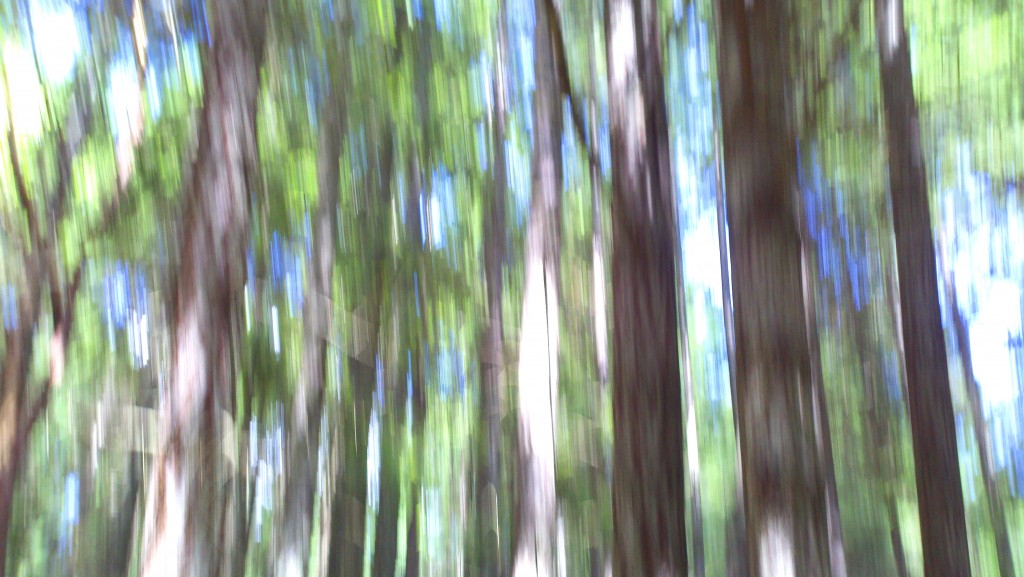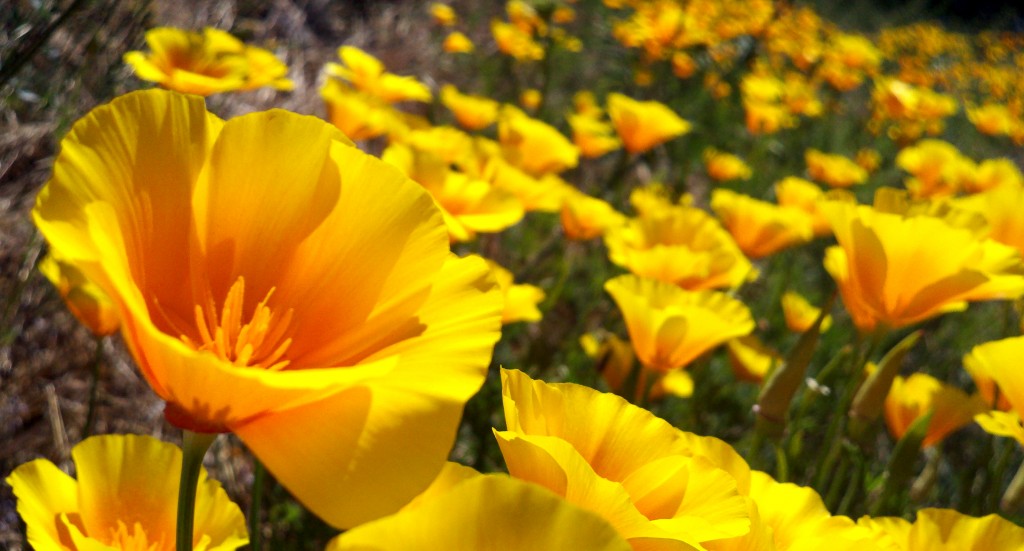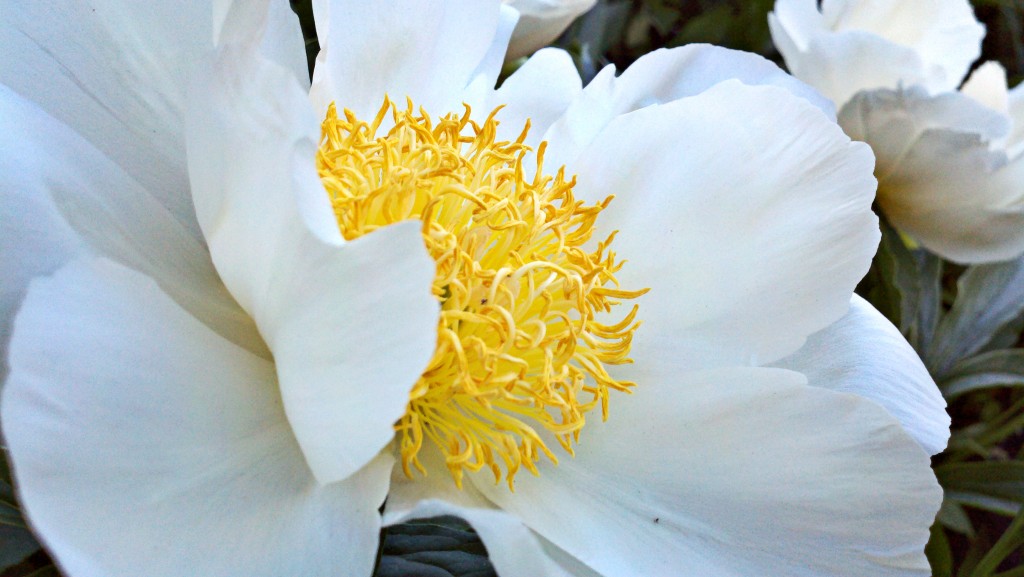Rattling out of the supermarket doors with my cart full of oranges, milk, and cereal, I reach my car to find two frustrated young men attempting unsuccessfully to maneuver a coat hanger wire into the window of the little red truck in the next stall. Their keys hang listlessly in the ignition, safe from intruders – and the passengers. Sensing a photographic moment, I grab for my camera, remembering at the last minute that I left it at home. But my smartphone hangs at my belt, and in a gesture that is now repeated hundred of times a minute around the world, I grab it and snap a photo. Not my usual vintage camera picture, not quite the quality of my SLR, but I get the image and capture the moment.
Returning half an hour later, I find them sitting disconsolately in the bed of their truck, waiting for help. I offer sympathy, mention my own rampant absent-mindedness, and suggest spare keys.
Driving home, I muse about the role my smart phone has taken in my life and, especially, how it has changed my photography. Visions of box Kodaks brandished by women in long dresses and men driving Model Ts come to mind, and I feel echoes of George Eastman rolling down the years. Eastman revolutionized photography when it was embryonic, and now with the cell phone, the world of image-making has again turned over.
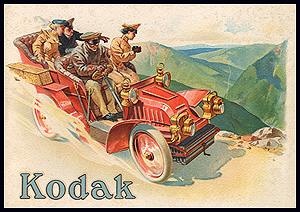
1904 Kodak Catalog Cover (Courtesy the Kodak Girl collection)
Writing on antique and nearly-antique photographic devices, I am not immune to the ironic tension between my topic (the dawn of photographic technique) and my methods (the blog, the computer, digital scanning, the search engine, etc., etc.). I rarely print an image. My gallery is the internet, and I have an audience far larger than Weegee or Brassai could ever hope for. I have no wet darkroom in my home; there are no sinks stained with Dektol, and my enlarger has long ago gone to the Salvation Army, after I discovered that trying to find a loving home for darkroom equipment today is like trying to buy ballet slippers for a brontosaurus. I wrinkle my brain learning Search Engine Optimization, crunch HTML to size the image of a 1910 Premo’s golden brass and gleaming wood, and bounce tips on preserving ancient leather off the antennae of orbiting satellites.
Yet with all this modern technology, I was dragged kicking and screaming a few years ago into buying an all-inclusive, do-everything smartphone. I LIKED my Palm Pilot. It talked happily to Microsoft Outlook via cable and kept my life organized. Cell phones had crummy little cameras suited only for snaps at teenage birthday parties. I had one and considered it junk – which, as a serious camera, it was.
Finally tamed, the phone hung on my belt, but I refused to use the camera, considering it not to be a serious piece of photographic equipment. However, it was always there, photo opportunities came by when I was camera-less, and I will take a picture on wet Kleenex rather than miss a good image. Soon the memory had hundreds of images, none of fantastic quality, but many documenting important moments, and some even artistic. I began to rethink my prejudice. Then I spent months in Northern Alberta, often with my phone as the only camera. The Droid had its limitations, but it was there. The next step was a Samsung Galaxy with a good 8-megapixel camera, and I truly saw the potential of this new medium.
I have now come to feel that all of us who carry these little multipotential boxes with their steadily-improving cameras, ride a wave that is changing photography as profoundly as did George Eastman’s little brown box with the string hanging out and a few yards of celluloid inside. George took photographic art out of the cart of the itinerant photographer, with his wet plates and massive camera, and placed it in the pockets of every one with a few dollars to spend.
But with today’s revolution, we have vastly more. Kodak gave us a the ability to record a few images conveniently and reasonably quickly, and no-one worried about the developing time – we all waited expectantly to pick up the vacation pictures at the drug store. Now Nokia and Samsung have given us the ability to capture hundred of images and view them virtually instantly. And, for the first time, the average citizen can have a camera at hand literally from the time he or she gets out of bed to the moment the lights are turned out. Moreover, within a minute or two, these images can be on their way to Facebook, Aunt Sally in Winnemucca, the Chicago Police, or today’s Al Jazeera. The chance for the professional or the man on the street to make and send hundreds of high-quality images at will (and almost instantly) has profound implications for both society and art.
We have all become accustomed to cell phone videos and images on CBS, NBC, and CBC. When dictatorial regimes tried to quash democratic movements a few years ago in the Middle East, silencing news media and the Internet, it was jerky cell phone clips that told the story of the resistance movement. The importance of this new social groundswell is attested to by Stanford University’s new course, ARTSTUDIES 173E, “Cell Phone Photography”. The Stanford catalog states:
“The ubiquity of cell phone photography has had a widespread impact on the tradition, practice, and purposes of photography, as well as concepts of art and what art should be for. …we discuss the documentarian bent of much cell phone photography, its potential as a component of citizen journalism….and effects that cell phone photography may be having on us as subjects….. students will create works of art utilizing the experimental, documentary, and social potentials of cell phone photography.”
In reviewing the impact of the cell phone on the world of photography, The Guardian’s Richard Gray comments:
“Traditional photojournalists have most to fear from mobile photographers. If something dramatic happens on the street … sorry, someone’s already there taking a photo of it…”
Yet there is another emerging aspect to the cell phone camera: with the advent of quality cameras such as those found on the iPhone and recent Android devices, this mode of photography is now entering the fine art world. Consider Dan Burkholder’s images taken and processed on the iPhone. Photographer Daria Polichetti, one of the hosts of the L.A. Mobile Arts Festival, was recently quoted in CNN’s article on the emerging field of cell phone fine art photography:
“These artists are innovating art at the front of the field and doing things… app creators didn’t even know was possible. They’re inventing new processes,” she said. “It’s a real collaboration.”
I predict that, within five years, images taken with cell phone cameras will find their way into exhibits at major galleries.
I cut my teeth on a Motorola Droid X, then moved onto the Samsung Galaxy, both within the Android system. Picture quality and the degree of operator control have consistently improved, and the multiplicity of sophisticated models now on the market puts good quality photography in one’s pocket at all times. There are still some caveats; many cell phone cameras are designed for the unsophisticated photographer, and resist creative effects. My Droid detested blurry images. Consequently, the shutter waited to fire until the subject was stationary, necessitating fighting with the internal software to produce any kind of artistic blur. I was able with some effort to shoot impressionistic images of a fir forest while panning vertically, though the camera wanted to wait until I stopped moving to fire the shutter:
However, it balked at recording blurs in a patch of wind-tossed poppies, firing the shutter (despite muttered swear words and repeated jabs at the shutter button) only when it could capture a nice stationary picture that would make Aunt Matilda happy:
This is a nice image, but nowhere as impressive as if I had been able to record the blurs of the tossing flowers; the image has no suggestion that a wind was present. Being creative often means having to fight with the device’s internal programming. I object to a camera that has a mind of its own and won’t let me take a “bad” photograph.
As one whose favorite shooting conditions are evening and and moonlight, the cell phone has one serious drawback: it is severely limited under low light conditions. Although it performs well without flash in a well lighted room or for sunset shots, after the sun goes down, the noise level skyrockets and picture quality plummets. This problem has improved with enhanced sensor quality, but the cell phone camera is still not the choice in low light, and so far, unlike my digital SLR or my vintage film-based Kodaks and Crown Graphic, night photography is not an option. Lack of a tripod socket is also a problem, though cell phone brackets that fit a tripod can now be bought commercially or readily improvised.
These objections aside, I have been able to capture some fine images that would been lost in a no-camera moment, and, like the little .38 on a detective’s ankle, I have come to depend on my phone as my backup camera, and an artistic device in its own right. In addition to innumerable images of family and grandchildren, I have some fair artistic images. A walk in the Denver Botanical Garden produced a good image of white peonies:
In a couple of areas, cell phone cameras actually present advantages over film cameras or even high quality digital cameras. Depth of field increases as sensor size decreases, so the small sensors on quality cell phones can create some stunning macro images, with depth of field not attainable on expensive, full-frame sensor digital cameras:

Bee on Thistle: Depth of field with cell phone image

The Hungry Bee
Secondly, cell phone cameras enable creation of easy and often dramatic panoramas in seconds, as evidenced by this panoramic image of Palouse Canyon in eastern Washington:

Palouse Canyon – iPhone panorama
Recently, I have started exploring one other option of the cell phone camera: candid panorama photography. I have discovered that, while it is considered rude to point a camera or phone at a group of strangers and pop a picture, no-one notices if one holds one’s phone and quietly rotates. This facility for the photographer to become part of the background while taking unnoticed, unique images of public places has possibilities not available with cameras that look like cameras:

At Tim Horton’s
Cell phone fine art photography has blossomed to the greatest degree with the iPhone, with its excellent camera and high-resolution screen. As with the Apple computer prominence in the graphic arts, Apple’s phone has combined a superb camera with a wide variety of processing software. The Android phones are catching up and have cameras of comparable quality, but still do not boast the same degree of post-capture creativity for the photographic artist. Hopefully, this will change in the near future as quality Android cameras are used by artists and Android-based software evolves.
Unlike Eastman’s box camera, however, the greatest quality of the cell phone camera is that it is so much more than a camera. What other device in my life goes with me everywhere, organizes my life, navigates me to the opera, predicts the tides, and stores my favorite menus? After a day’s hiking, I curl up in my tent, read a book. listen to the BBC, turn on a flashlight, get the weather report, go to sleep with music – all with my phone. If I can’t sleep, I go outside and and admire the stars and the Milky Way, guided by the Google Sky application: just point the phone at an area of sky, and the GPS sensor and internal celestial map interact to display constellations, planets, and major celestial objects on the screen. The alarm app wakes me up for the morning light. AND it’s a pretty good camera.
Where the cell phone camera truly shines is the quick, unobtrusive shot – see, click, and scram. Passing through Baltimore’s airport recently, I was struck by this line of weary travelers plugged into mini-carrels and propped against the wall, each totally engrossed and oblivious to the bustle around them:
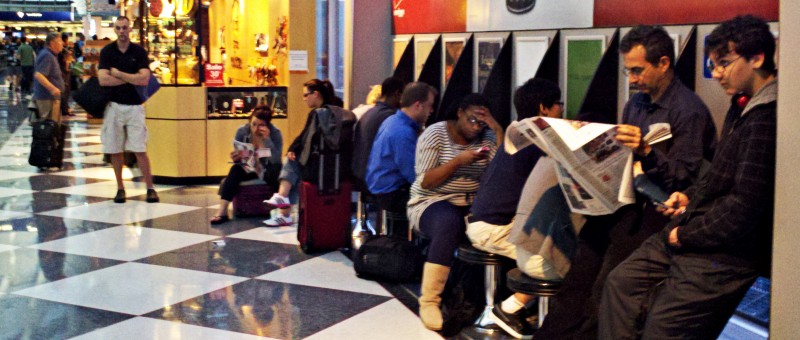
Waiting and Working
I lifted my phone from my belt, stole a quick image, and walked off, trying to look as if nothing had happened. My actions were lost in the kaleidoscope of movement around me.
Like the original box Kodak of 1888, with its cumbersome, string-cocked cylindrical shutter and circular image, the smart phone camera is here to stay, and the world will never be the same. That clunky little box launched a social and artistic revolution. The cell phone camera, nestled quietly in our pockets, may do no less.
*Note:
Luddite: The name applied in modern times to those opposed to new technology, especially automation and computerization. The term derives from the nineteenth century social protest movement of British handloom weavers who, facing the loss of their livelihood as the Industrial Revolution introduced automated looms, burned mills and factory machinery starting in 1811. The movement derived its name from the English weaver Ned Ludd who, in 1779, is reputed to have smashed two knitting frames in a “fit of passion.” An exhaustive collection of links to the Luddites and modern neo-Luddism can be found at Martin Ryder’s University of Colorado site.
References:
Burkholder, Dan. “iPhone Artistry.” http://www.danburkholder.com/Pages/misc_pages/Portfolios/iPhone_Artistry.html
Cambridge in Color. “Digital Camera Sensor Sizes.” http://www.cambridgeincolour.com/tutorials/digital-camera-sensor-size.htm
Gray, Richard. The Guardian Observer, London, 2012. “The Rise of Cell Phone Photography.” http://www.theguardian.com/artanddesign/2012/nov/16/mobile-photography-richard-gray
“Luddite.” Wikipedia article. http://en.wikipedia.org/wiki/Luddite
“Ned Ludd.” Wikipedia article. http://en.wikipedia.org/wiki/Ned_Ludd
Russell, Lauren. “Mobile phones give artists new tools to create. ” CNN Living, September 19, 2012. http://www.cnn.com/2012/09/19/living/iphone-art/
Sweet, Tony. “A Day in the Life in iPhone-Land.” http://tonysweet.com/2013/07/16/a-day-in-the-life-in-iphone-land/

